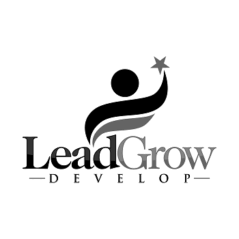How to Host a Planned Media Event
By Stafford Wood, APR, is President of Covalent Logic and author of “On the Record: The Essential Guide to Media Relations”
There are times when simply sending a press release or pitching a story isn’t enough to get the media’s attention. When you have something truly newsworthy—an announcement, a major update or a significant development—you may need to organize a planned media event. These events provide an opportunity to control the narrative, engage reporters in real-time and ensure that your message is delivered effectively.
Why would you have a media event?
- To provide a firsthand look at something significant, whether it’s a new facility, technology or initiative.
- To align media coverage with a scheduled event, ensuring timely and relevant reporting.
- To deliver a major news update in a controlled setting, maximizing impact and clarity.
Tip: Reporters love planned events (that are well planned) because they are often able to get all the necessary interviews and video footage at one location. They call it a one-stop shop, and it makes their day just a little bit easier!
PRESS CONFERENCES
A press conference is an essential tool when you need to deliver important information to multiple media outlets at the same time. While often associated with crisis communication, press conferences are also effective for major announcements, leadership changes or significant organizational updates.
When planning a press conference, preparation is key. Consider the logistics. Use a multibox (a device that allows multiple media outlets to plug in their audio equipment) to ensure clear audio for each outlet.
Decide whether speakers will stand at a podium or sit at a table, and instruct all participants to move to the microphone before speaking if there is only one available. Position key individuals behind the speaker for a visual presence, if appropriate.
In addition to setting the stage, it’s crucial to prepare for the Q&A session. Outline your talking points, determine who will answer specific questions and rehearse responses. Remember, you are in control of the press conference! You called it. It’s your event. That means you get to end the session when you feel necessary.
Practice these lines …
- “One more question.”
- “I, personally, don’t know that information, but I will get back to you once I talk to the [subject matter expert].”
- “That’s all we have time for today, thank you.”
Literally say them out loud right now. A few times to get comfortable with them.
FACILITY TOUR
If your organization has a new facility, upgraded equipment or technology to show off or an innovative process to unveil, inviting the media for a tour can be a powerful way to generate coverage. Journalists appreciate behind-the-scenes access, and a facility tour allows them to experience your operations firsthand. (Make them feel special. They like that.)
When organizing a facility tour, be prepared to:
- Lead an engaging walkthrough, explaining key highlights.
- Arrange interviews with leadership or experts.
- Identify an ideal interview area where the media can capture compelling images and ask the expert questions in a well-lit space.
GRAND OPENING
Break out the giant scissors and gold-plated shovels! A grand opening is a celebratory moment that offers an excellent opportunity for media exposure and that proverbial ground-breaking photo. If your organization is launching a new location or unveiling a major expansion, consider coordinating with local chambers of commerce, as they often facilitate ribbon-cutting or ground-breaking ceremonies. These events serve as a great way to make stakeholders feel appreciated, attract community interest and land coveted media attention.
PRESS KIT
A press kit serves as a catch-all resource for journalists, providing essential background information and media assets. That could mean high resolution headshots, names and proper titles or even pre-produced video. Traditionally, press kits were printed folders filled with company materials, but those days are long gone. Now, they’re often dedicated webpages or even Dropbox links.
A well-prepared press kit might include:
- Company background, fact sheets, leadership bios
- High-resolution logos and photos
- B-roll footage for broadcast use
- Contact information for media inquiries
EXAMPLE MEDIA PLAN FOR AN EVENT
Two Months Out
- Meet with your client or leadership team to determine what the goals are.
- Start a draft of the press release.
- Secure the event venue (at client, on campus). Let appropriate event teams know. Involve security, if necessary.
- Plan event logistics.
- Seating, food, simple decor, podium, signage, photographer
- Bathrooms, water, shade
- Photo and interview opportunities
- Alternative weather plans
One Month Out
- Start the media invite draft.
- Finalize the press release.
- Prepare assets for the press kit.
- Prep speakers with talking points and a media training refresher.
Two Weeks Out
- Finalize the media kit.
- Send out the media invite.
- Include who, what, where, when and why the event, but not the full press release or announcement.
Monday of the Event
- Send out the media invite again with a “reminder” header.
Day Before the Event
- Make phone calls and send emails to targeted media to confirm attendance.
Day of the Event
- Keep your phone handy for last-minute calls from the press, including how to get to the event.
- Coordinate interviews for after the press conference, ceremony or event activities.
Post Event
- Send out a press release to invited press after the event with photos and video.
